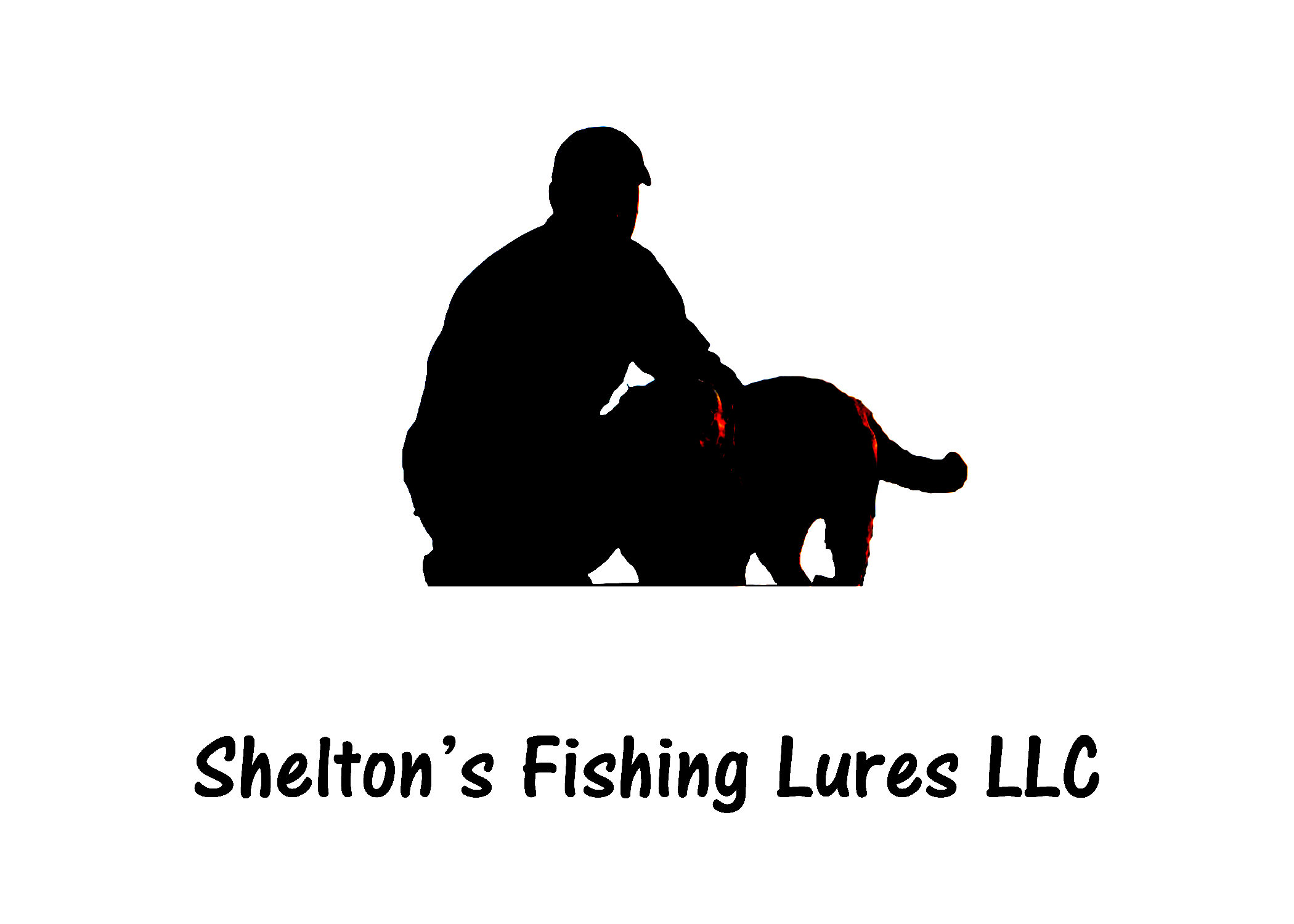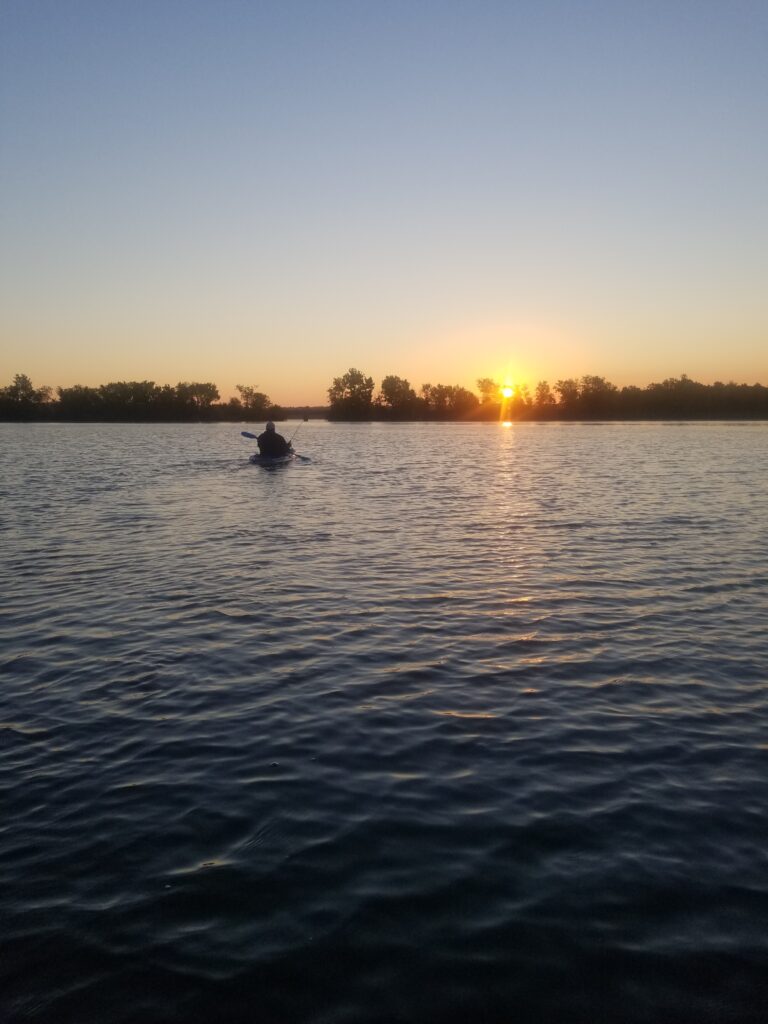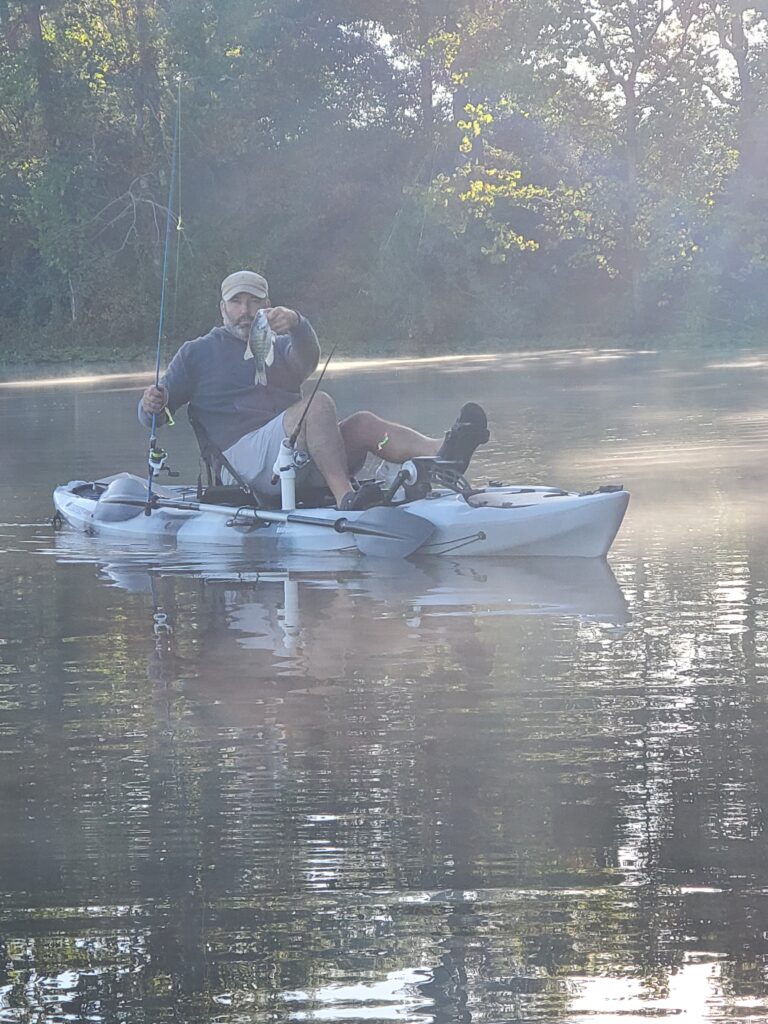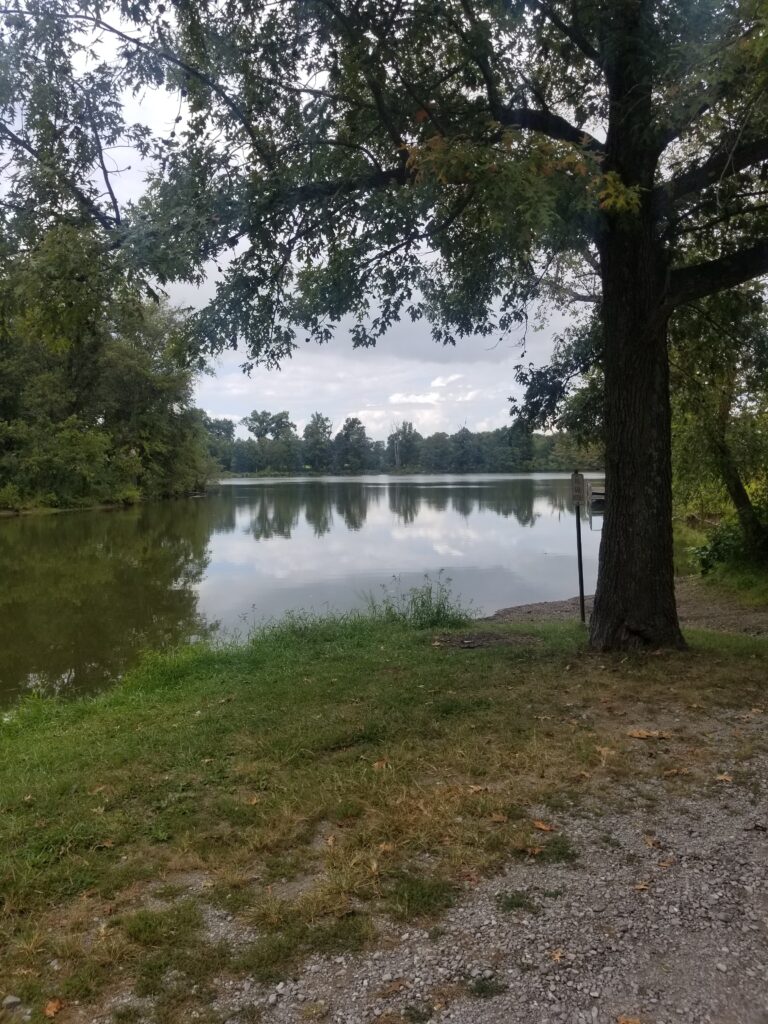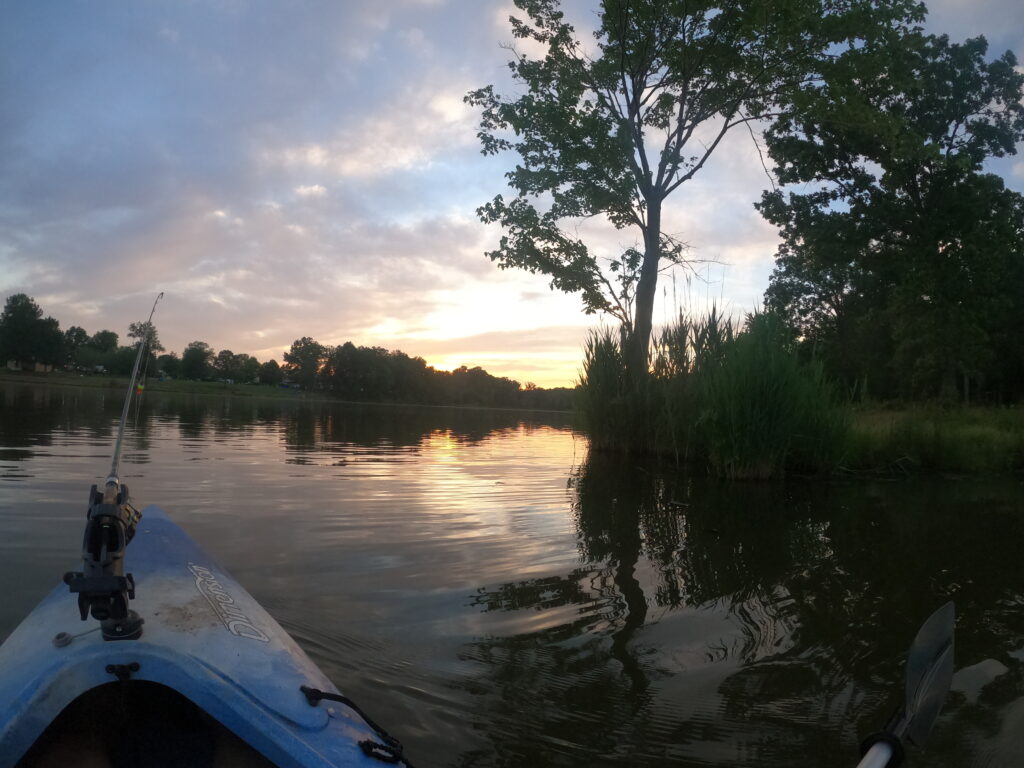Illinois Lakes, Kayak Fishing, Rend Lake, Tips and Tricks
Trolling Late Summer Crappie On Rend Lake
Preparing For A Tough Crappie Fishing Trip on Rend Lake At The End Of Summer.
A friend of mine had asked if the crappie bite was on up at Rend Lake in the middle of September. “Pretty much everything stops after the first couple of hours after morning, and that’s if you use very high-end electronics to cover water efficiently”, was my response. My boat was down but I was trying to get him into Kayak fishing and invited him along for a quick trip. I told him to bring a rod and we would Crappie Fish Rend Lake the only way I knew how when the fishing was extremely tough.
September Can Be A Very Difficult Month To Catch A Limit Of Crappie On Rend Lake.
The deck had been stacked against us as a cold front had just pushed through 12 hours before. I welcome cold fronts as they usher in the incredible feeding frenzy experienced up at Rend Lake but they don’t typically take effect until mid to late October. The fish were going to have a bad case of lock jaw, but I knew we would still have some success given the rare opportunity advantage you have when fishing from a kayak over a 50,000.00 boat with the most updated bells and whistles.
We launched our Kayaks from the northeast end of the lake. The section is absolutely littered with stumps and depth ranges when the lake is sitting at 407ft above sea level were 3 to 6′ so adjust those numbers when you know the water levels. I had two rod holders strategically placed on each side of my kayak. From there I took two rods, one with a 1/16oz Shelton’s Painted Jig Head and a 1/8oz Shelton’s Painted Jig Head. I will discuss later why the two different sizes. Casting the the eighth ounce approximately 30′ away and the smaller jig head twice as far I let both settle to the bottom. Once they reached their destination, I began to back pedal dragging the jigs up off the bottom.
The Most Effective Way To Catch Crappie After A Cold Front In A Kayak.
It wasn’t 5 minutes in before my right rod bobbed up and down and I came up with a miss. Justin yelled a few minutes later that he just missed one. Another 10 minutes would pass before I got another thump, this time connecting with a solid 12-inch crappie. Bringing him up and bragging in our friendly competition. As the morning drug on we would experience hang ups, misses and one more crappie. What was most interesting was there were 6 boats around including a guide boat and between the 6 we only saw one fish, a catfish landed. More action was to come though later on.
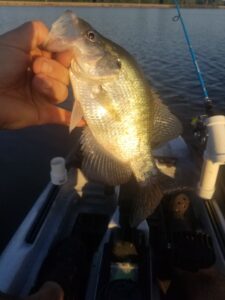
Later That Day The Fish Seemed To Recover A Bit.
I had a seat issue that needed to be fixed from the local Ace Hardware and Justin had to go to work so we called it pretty early. Once he was headed back home, I was right back to the lake to check the channel to see if the morning crappie had made their way to deeper water. While it was by no means a memorable day, I did manage to come away with 12 crappies, a channel catfish, and 2 drums which made for some excitement.
My Kayak Setup For Trolling For Crappie
If you’re a seasoned fisherman then you are well aware of the concept of “trolling” for fish. You either use your big motor or your trolling motor, cast several rods out at random distances and cover the lake hoping to run across active fish.
When it comes to Kayak fishing you have so many more advantages. First off you can cover shallow water, in this case high standing stumps without causing any kind of expensive damage to your rig. Secondly and possibly the main reason for the success is that you cover water with a high degree of stealth. Typically the only way to alert the fish to your presence is by making a lot of noise, but with a little practice you can move in and out of areas without putting the fish on edge and making them more comfortable to feeding.
Does This Technique Always Work?
I can say to this day I’ve never been skunked when trolling. I’ve had great days and I’ve had slow days like this particular day. If you think about it though, it’s one of the most efficient ways there are to finding feeding fish, not to mention the incredible amount of exercise you get without really noticing.
As for why the two different size jig heads being used as well as the various distances being dragged… It’s simple yet complicated. The simplicity is that you can get one lure a long distance away insuring that no fish in the area are aware of your presence. The complication though involves physics. Line drag, Distance, weight, and speed all combined, play a huge roll in how far your baits will run. I plan to cover this in great detail in a future post.
